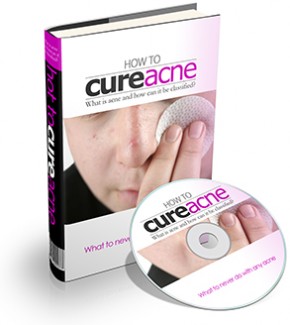 License Type: Private Label Rights
License Type: Private Label Rights  File Size: 20,735 KB
File Size: 20,735 KB File Type: ZIP
File Type: ZIP
 SKU: 52605
SKU: 52605  Shipping: Online Download
Shipping: Online Download
Ebook Sample Content Preview:
Prescriptions
Generally, mild and moderate forms of acne can be treated with over-the-counter medications, but with severe cases you may need to seek treatment from a dermatologist. In many cases, the doctor will recommend an oral or topical prescription medicine to deal with the condition.
Antibiotics
Commonly used to fight acne, antibiotics can be taken orally or as a lotion. Topical prescription medications may include ingredients such as zinc or retinoids. The most common antibiotic used for treating acne is tetracycline. It is used to kill the bacteria responsible for acne and also reduces inflammation. Treatment may take several weeks or even months to be effective and it's important to continue using antibiotics even after the acne has cleared up.
A common side effect associated with tetracycline is increased sensitivity to sun light, resulting in bad sunburns if you stay in the sun too long. Further side effects may include dizziness, hives, and upset stomach.
Women who are taking tetracycline may be susceptible to an increase in incidences of vaginal yeast infection.
Ointments and topical solutions
Antibiotic ointments actually have fewer complications than oral antibiotics. If you use these ointments with other topical treatments like benzoyl peroxide, the bacteria may not develop resistance to the antibiotics. This increases the level of prevention.
Retinoids
Retinoids are a form of acne medication that are derived from vitamin A and can be applied directly to the skin. Topical retinoid medications are useful for treating blackheads and whiteheads by helping to open clogged pores.
Oral retinoids are used to treat the more severe forms of acne, because they have a better chance of stopping breakouts and lesions which don't respond to other treatments. Oral retinoids cause the upper layer of the skin to peel which opens the pores. They also cause the body to produce less sebum, the substance which causes oily skin.
As with many other types of prescription strength medication, a number of serious side effects are associated with oral retinoids. They can cause liver damage and depression, so regular medical attention is needed to make sure the patient is not being adversely affected by retinoid treatment. This medication can also cause birth defects if mothers are taking it when they're pregnant.
Other medications
Birth control pills are sometimes effective in treating acne in women. They change hormone levels in the body and can reduce the acne causing effects of testosterone.
Surgical Options
If you are considering the possibility of treating acne with laser therapy or surgery, fully evaluate each of the processes, including the number of required treatments, the costs, and the potential side effects of the treatment. It's also important that you select a process that is designed to deal with reducing the presence of acne without scarring.
Acne Surgery
Acne surgery involves making an incision into the affected area and draining the clogged matter. The process for blackheads and whiteheads doesn't actually involve surgery, but is often performed by a nurse, esthetician or dermatologist. A small, pointed blade is used to first open the comedone and then gently work the material out using a comedone extractor.
Severe cysts can be drained and removed by excisional surgery. The procedure extracts the cysts in a sterile environment so additional bacteria does not enter the wound and develop serious infection or create scarring.
Forms of Physical Treatment
Exfoliation
This treatment involves removing the top layer of skin chemically or with an abrasive. Chemical peels are usually done with salicylic acid or glycolic acid. These work by destroying a microscopic layer of skin cells to unclog pores and remove the build-up of dead skin cells. The same effect can be achieved by using an abrasive cloth or liquid scrub.
Comedo Extraction
In this procedure, an anesthetic cream is applied to the affected area. The comedones (blackheads and white heads) are extracted using a pen-like instrument which opens the top to allow the removal of dead skin cells and sebum from the follicle. The procedure is usually followed by an application of antibiotic cream.
Drainage
With many forms of severe acne, cysts can form under the skin and become very painful, even disfiguring. Often, the smaller cysts can be treated with cortisone injections which will flatten the lesion in a few days. But for larger cysts the only alternative is to have them drained and then surgically removed. Drainage can help relieve the pain associated with cysts and also reduce the chance of scarring. It is important not to try to drain cysts yourself, because you risk infection, which could lead to permanent scarring.
Laser Treatment
Laser treatments involve the use of varying wavelengths that are aimed directly at the affected area of the skin. These wavelengths pulsate against the skin and destroy overly-large sebaceous glands and acne lesions. Laser treatments remove the damaged outer layers of skin so that new cell growth can be initiated. The laser technician varies the intensity of the laser as necessary to effectively treat the area.
Despite all of the benefits, there is still considerable debate surrounding the effectiveness of laser therapy. It has been shown to be effective in improving the skin's appearance, but as with most of the other available acne treatments, there are some side effects.
For example, patients can experience red, burned skin after treatment that can last for weeks. Individuals with dark-colored skin can end up with skin discoloration after laser treatments. Finally, the skin’s appearance can be uneven if the laser is applied inconsistently.








